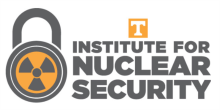Abstract
The scheme that carved world order during the Cold War was a pitched battle for 'containment' against burgeoning communism. In turn, rationality gave way to the threat of catastrophic nuclear force as the basis of stability. If at all there is a historical lesson to be learned from that experience then it is that stability begins with serious and sustained dialogue between leadership; the alternative being what Kennedy termed "the peace of the grave." An appraisal of the contemporary global state of nuclear affairs will suggest that the three pillars of nuclear stability, namely, non-proliferation, control of fissile material production, and transparency of nuclear arsenals are wobbly for lack of foundational support. In the truancy of global foundational support the answer may well lie in reconstituting a framework for détente.
In the Subcontinental context there looms a very real nuclear nightmare. It takes the form of a hair-trigger, opaque nuclear arsenal that has embraced tactical use under decentralized military control, is steered by an ambiguous doctrine, and guided by a military strategy that carouses with non-state actors. The effect of an weakened civilian leadership in Pakistan that is incapable of action to remove the military finger from the nuclear trigger can do little to dispel the nightmare. A singular feature of the deterrent relationship in the region is its tri-polar character. As is well known today, it is the collusive nature of the Sino-Pak nuclear relationship which created and sustains the Pakistan nuclear weapons program. This in stark contrast to the Indian nuclear doctrine that went public in 2003.
The unleashing of Islamic radicals in the wake of US withdrawal from the Af-Pak region and their mounting internalization in the Pakistan military and political establishments brings into question the state and motivation of the nuclear command and control structures there. Stability in this context would suggest the importance of not only reinforcing assured retaliation to nuclear violence, but, at the same time, for Indian leadership to bring about a consensus among both China and the USA to persuade Pakistan to harmonize with foundational rules of nuclear conduct and re-orient the Sino-Pak nuclear collusion.
DOI
https://doi.org/10.7290/v77h1gg1
Recommended Citation
Shankar, Vijay
(2015)
"Subcontinental Nuclear Instability: The Spiralling Nightmare,"
International Journal of Nuclear Security:
Vol. 1:
No.
1, Article 8.
https://doi.org/10.7290/v77h1gg1
Available at:
https://trace.tennessee.edu/ijns/vol1/iss1/8
Creative Commons License

This work is licensed under a Creative Commons Attribution 4.0 International License.
Included in
Defense and Security Studies Commons, International and Area Studies Commons, International Relations Commons


